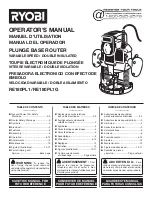
64
Purpose Command
Remarks
Display the current alarm
information of the transceiver
module in a specified interface
display transceiver
alarm interface
[
interface-type
interface-number
]
Available for all transceiver
modules.
For more information about the transceiver module displaying commands, see
H3C
SR6600/SR6600-X Routers Fundamentals Command Reference
.
Saving the current configuration of the router
You can save the current configuration of the router in one of the following methods:
•
Fast
saving
—Executing the
save
command without the
safely
keyword. This mode saves
the file more quickly but is likely to lose the existing configuration file if the router reboots or the
power fails during the process. The fast saving mode is suitable for environments where the
power supply is stable.
•
Safe
saving
—Executing the
save
command with the
safely
keyword. The mode saves the
file more slowly but can retain the configuration file in the router even if the router reboots or the
power fails during the process. The safe saving mode is preferred in environments where a
stable power supply is unavailable or remote maintenance is involved.
To save the current configuration of the router:
Task Command
Remarks
Save the current configuration to
the specified file, but the
configuration file will not be set as
the file for the next startup.
save
file-url
[
all
|
slot
slot-number
]
Use either command.
Available in any view.
The configuration file must be with
extension
.cfg
.
During the execution of the
save
command,
the startup configuration file to be used at the
next system startup might be lost if the router
reboots or the power supply fails. In this case,
the router will boot with the factory defaults,
and after the router reboots, you need to
re-specify a startup configuration file for the
next system startup.
Save the current configuration to
the root directory of the storage
medium of the active or standby
MPU and specify the file as the
startup configuration file that will
be used at the next system
startup.
save
[
safely
]
Rebooting a module or router
When upgrading and maintaining the startup configuration file or configuration file for the router, you
need to reboot the router. After you change the operating mode of a MPU or service module, you
must restart the corresponding module. To reboot a router, use one of the following methods:
•
Use the
reboot
command to reboot a router.
•
Enable the scheduled reboot function at the CLI. You can set a time at which the router can
automatically reboot, or set a delay so that the router can automatically reboot within the delay.
•
Power on the router after powering it off, which is also called hard reboot or cold start. Powering
off a running router causes data loss and hardware damages, and therefore is not
recommended.
The precision of the rebooting timer is 1 minute. One minute before the rebooting time, the router
prompts "REBOOT IN ONE MINUTE" and reboots in one minute.
















































